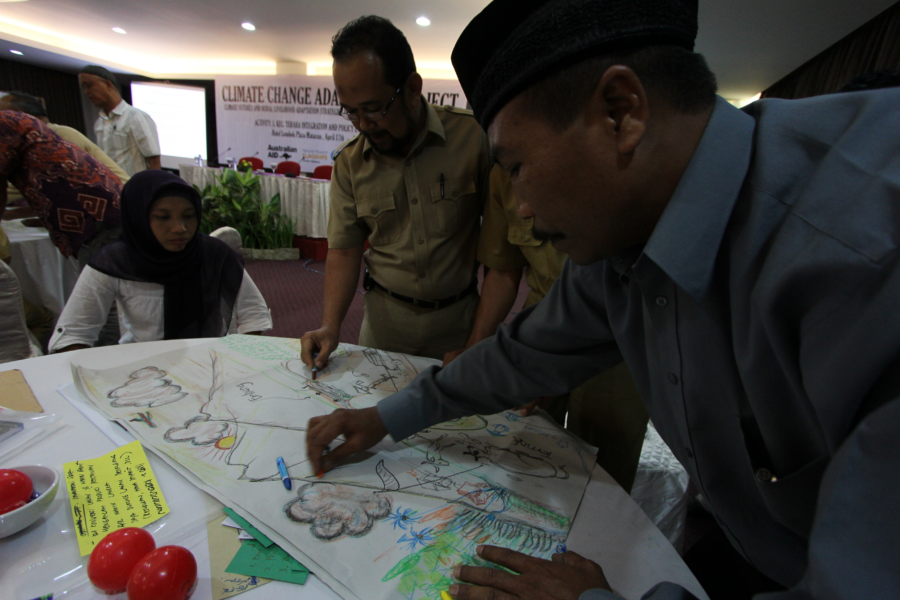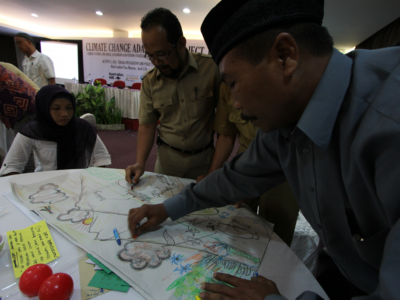This four-year collaborative project engaged provincial and local government, NGOs, businesses and communities to plan and test adaptation strategies that could enhance vulnerable communities’ incomes, while building the resilience of all stakeholders to long-term change and uncertainty. The project was intended to demonstrate an adaptation planning approach that could be scaled out in other rural regions of Indonesia.
Several of the strategies tested out in Lombok have been adopted, funded and scaled out by government agencies, the private sector and communities.
The resulting Vulnerability Atlas of the Nusa Tenggara Barat (NTB) Province has been applied by the United Nations World Food Program to guide their food security and resilience program, and has secured funding for the implementation of adaptation strategies. The atlas was also incorporated into the NTB Government’s Food and Nutrition Action Plan 2012, and the Strategy and Action Plan for Food Security and Climate Change.
The scenarios were made in: 2012
The scenarios look out to: 2090

